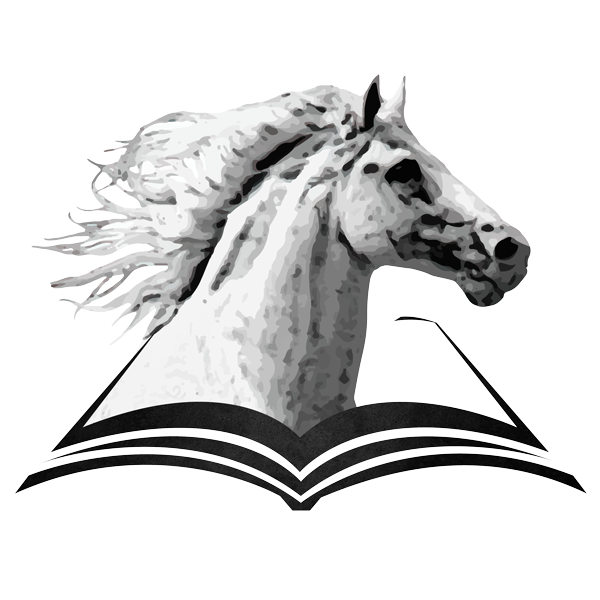- A diet (also known as ‘feeding plan’ or ‘feeding program’) is designed to fulfill the horse’s nutritional requirements at a given time or in preparation for future events (according to individualities). The feed sources and the amounts to be used are chosen based on the nutrients and dry matter content.
- Feeding should be made by weight of feed (based on its dry matter content); conversely, feeding by volume causes mistakes that could result in an excess or lack of nutrients and/or dry matter.
- Each horse should be fed according to several parameters:
- Physiological stage: maintenance (a non-reproducing, non-working, adult horse that is not expected to gain weight), growth and development, and reproduction (breeding season, pregnancy, and lactation).
- Body condition:
- Physical activity: rest, working long distances mainly walking, performing speed sports (e.g., racing, street racing, roping, barrel racing), or sports where strength, agility, and moderate speed are required (e.g., dressage, jumping, reining, gaits).
- Individual needs: the amount of energy needed can vary from horse to horse. For example, when feeding ‘easy keepers’, the amount of energy in the diet and the sources being used should be carefully planned to prevent metabolic diseases. Conversely, other horses with fast metabolism need more energy in their diets than others in similar circumstances.
- All horses’ diets should be evaluated and adjusted (when needed) at least once a month to keep the animals in optimal condition, neither under- nor overweight. The key here is keeping records of the diet being offered to each horse (feed sources, amounts, and frequency) and monitoring the body condition, as well as growth in young horses, and performance in working horses.
- When possible, the horse should live in a good pasture
- Confined horses should have permanent clean/fresh water to drink and be fed good quality forage. Horses kept in pastures (as well as all wild equine species, including horses) graze about 17 hours a day and chew the grass carefully. Therefore, confined horses without access to grazing should be fed small frequent amounts of forage, instead of free choice or few big amounts at once, especially of a dehydrated form (like hay in racks or nets).
Forage can be offered in the forms of fresh-cut grass/legume or a dehydrated form, such as hay, cubes, compressed blocks, pellets.
- When fresh-cut grass
- Forage is the main feed for the horse; grains (cereals) and concentrate feed are supplements. When supplementation is used, forage should be offered in a higher proportion than grain and/or concentrate. ONLY in special situations, and under strictly supervised conditions, should some horses be fed 50% forage and 50% grain/concentrate. Likewise, grain/concentrate should never be offered free-choice to horses due to the high risk of metabolic illnesses it may cause.
- Similar amounts of feed (forage and grains/concentrates included) should be offered to the horses at the same time every day (except grain when the horse rests one or more days – read below). This allows better digestion and helps prevent gastric ulcers.
- Grains (cereals) and/or concentrate feed given to confined horses should be distributed twice a day at a minimum, but more frequently, is ideal.
- Changes in either feed sources (including forage) or feeding schedule should be made gradually over one week.
- Grain supplementation (including cereals and concentrate fed) should be reduced for working horses during one or more days of rest to prevent metabolic problems.
- Likewise, grain supplementation should be reduced or suspended for working horses that become difficult (‘hot’) while being trained/ridden. When behavior is back to normal supplementation can be increased gradually. The alternative is supplementing a ‘cold’ source of energy (e.g., fat or low-starch and no molasses concentrate feed).
- Salt (sodium chloride) should be offered free-choice to horses in “salters” placed away from the rain, so that the animals may eat the required daily amount to replace what is lost in sweat, urine, and milk (for mares in lactation). Possible sources to use are iodized salt or sea salt (the same kinds used for cooking), and salt blocks/bricks.
- The other macro and micro minerals may be supplied through a mineral supplement mixed with the food, in an amount that covers the needs of each horse. Offering minerals mixed with salt is an alternate option, either the mineral salt powder or compressed into a block/brick. Doing this, however, makes the intake of minerals dependent on the horse’s salt needs.
- The calcium/phosphorus ratio in the diet should be balanced between 1.3/1 to 1.85/1, and based on its content in the feed sources being used.
- A foal older than 30 days of age may be supplemented with an intermediate-to high-protein concentrate (14% to 18%) in a separate feeder from the mother to which she should have no access.
[ofrecer para la venta comedero para potros]
- When horses are fed in groups (for example, at the time grain/concentrate is offered), herd interactions should be observed to determine whether the most dominant animals steal the food (thus, may be overeating) from others and/or the most submissive horses are not eating enough (thus, may be undereating) because more dominant ones steal the food from them. These possible situations can be solved in two ways: either feeding the most dominant and/or the most submissive horses of the group separately or having separate feeding pens for all the horses, which, besides solving the issue, reduces the risk of injuries that may occur due to battles during feeding time.
- A horse should rest (not work) for a minimum of one hour after finishing to eat a full meal containing grains or concentrate.
- When the horse is hot after intense work, it may drink up to 10 sips of water after 15 minutes of “cool down”. 15 minutes later it may drink free-choice.
- Likewise, when the horse is hot after intense work, it may eat forage after 15 minutes of cool down. Grain can be offered to the horse only after one hour of rest.
- Feeders and water suppliers should be cleaned regularly to avoid contamination by microorganisms.
- A horse living in a cold area (or during the winter) needs more forage in order to obtain the energy required to keep its temperature constant.
- Geriatric horses (20 years and older) require some special attention while designing their diets. Before discussing further details, some considerations need to be taken in count, fist. Their teeth need regular maintenance that includes: removing sharp edges and fixing any ramps or hooks on their premolars/and molars, correcting any occlusion issues found on their incisors, and attending any tooth cavities or infections in the gums (both of which can be presumed when there is bad breath). Internal parasites should be controlled, ideally based on a fecal egg count test.
The forage should be of good quality in terms of not being too hard to chew and the fiber content not to exceed 26%. Beet pulp can be included in the diet because it is easy to chew, is a source of highly digestible fiber, and is palatable. The total protein in the diet should be around 11% and fat (e.g., vegetable oil) can also be added if additional energy is required. Calcium and Phosphorus ration should be 1.1/1 to 1.3/1. A yeast-based product
- Convalescent horses should be fed based on the illness they are recovering from and the systems that were affected. To do this, a good understanding of the disease is needed (including what initially caused it in this case), as well as having the assistance of a veterinarian, ideally who attended the horse when was ill. Anyway, here are a few guidelines to design a diet for a convalescent horse. Since forage is the most natural food for horses, small amounts of a good quality forage with fiber around 26% should be offered frequently. A yeast-based product can be included to promote the microflora from the cecum, which is especially beneficial if the horse ended a treatment with antibiotics to recover from an infection or as prevention after surgery. Supplementation of beet pulp and/or low-starch and non-molasses concentrate in small amounts twice or three times a day is safe in most cases. Vegetable oil can also be added if the horse needs extra energy, except when liver problems exist. Any feed additions or changes to the diet should be made gradually within four days, at least.
Read hear about Feeding and metabolic disorders in horses

